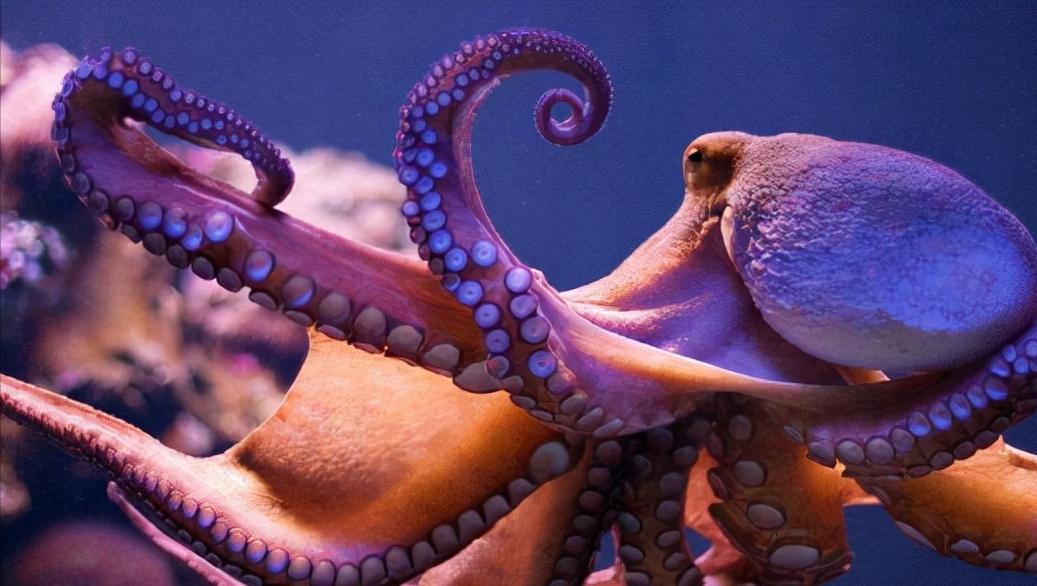Squid is considered by many friends to be equivalent to octopus and squid, because people can often see octopus and squid in their daily lives, so everyone thinks that squid is also everywhere. In fact, although the squid looks similar to octopus and cuttlefish, the attack methods and life habits are not the same. Today, I will introduce you to the squid. Take a look at how big the largest squid in ancient times really was.

The squid's real name is squid, also known as flower branches, cuttlefish or cuttlefish. It is a mollusk of the order Phytocephalopodidae. When the squid encounters a strong enemy, it will use "inkjet" as a method of escape and wait for the opportunity to leave, so it has names such as "squid" and "cuttlefish". They have pigmented sacs in their skin that change color and size as "mood" changes. Squids can jump out of the sea and have amazing aerial flight capabilities. Like squid and octopus, they are marine mollusks, and none of the three are fish.
1. Appearance characteristics
Squid, also known as cuttlefish and cuttlefish, is a marine cephalopod mollusk of the order Squid, closely related to octopus and gun squid. Modern squid appeared in the Miocene 21 million years ago, with ancestors of the arrow stone class. It is characterized by a thick calcareous inner shell (squid bone, cuttlefish bone, or sea mantis, which can be used for medicinal purposes). The body of the squid can be divided into three parts: head, foot and trunk, which is equivalent to an internal organ mass, and is covered with a muscular sheath and a calcareous inner shell. The anterior end of the cephalic body is spherical in shape, with an apex of the mouth, surrounded by a muscular membrane, and 5 pairs of wrists on the periphery. The two sides of the head have a pair of well-developed eyes, which are complex in structure. There is an oval fossa under the back of the eye, called the olfactory trap, which is an olfactory organ, and the olfactory apparatus of the gastropod is a chemical receptor.
2. Predatory characteristics
Because stable structural myoglobin is a necessary condition for the survival of squid in the deep sea, squid is keen to eat crabs, fish, shellfish, and even the king squid does not hesitate to fight with sperm whales to fight for astaxanthin resources. Astaxanthin is the strongest antioxidant and is necessary to ensure that myoglobin is structurally stable without being oxidized. According to 2008, Professor Francisco Buda, a scientist at Leiden University in the Netherlands, and his experimental team members found that the reason why cooked shrimp, crabs, salmon represent fish, and some shellfish meat showed a seductive bright red color through accurate quantum computing means is because shrimp, crabs, salmon represent fish, some shellfish meat, etc. are rich in astaxanthin, and the natural red substance of cooked shrimp, crabs, salmon representing fish is astaxanthin.
3. Prehistoric squid
The largest ancient squid was the prehistoric squid, and scientists have found fossils of prehistoric squid in the coast of Australia, Germany and the Western Inland Seaway. Also known as the Cretaceous Sea Route, the Western Inland Seaway once divided North America in two. The largest squid is the Tyrannosaurus squid, the largest invertebrate ever found on Earth. Living in the deep sea, it can reach a length of up to 20 meters, and is one of the largest predators in the deep sea.
After reading the above introduction to the largest squid in ancient times, it should be known that the body length of the world's largest animal blue whale is only 24 meters, and in ancient times, the length of a squid can be comparable to that of a blue whale. Of course, this is also because in ancient times, the whole earth was the domain of animals, and many animals were at the top of the food chain and had no natural enemies, so their size developed more and more.